Yassou!
Ancient Greek civilization is divided into four major parts: the Archaic period, the Classical period, the Golden Age of Athens, and the last Classical period. Of these four periods, the Classical period was the period in which Greek sculpture was at its height.
Advanced mathematics was also applied to these sculptures to enhance their beauty.
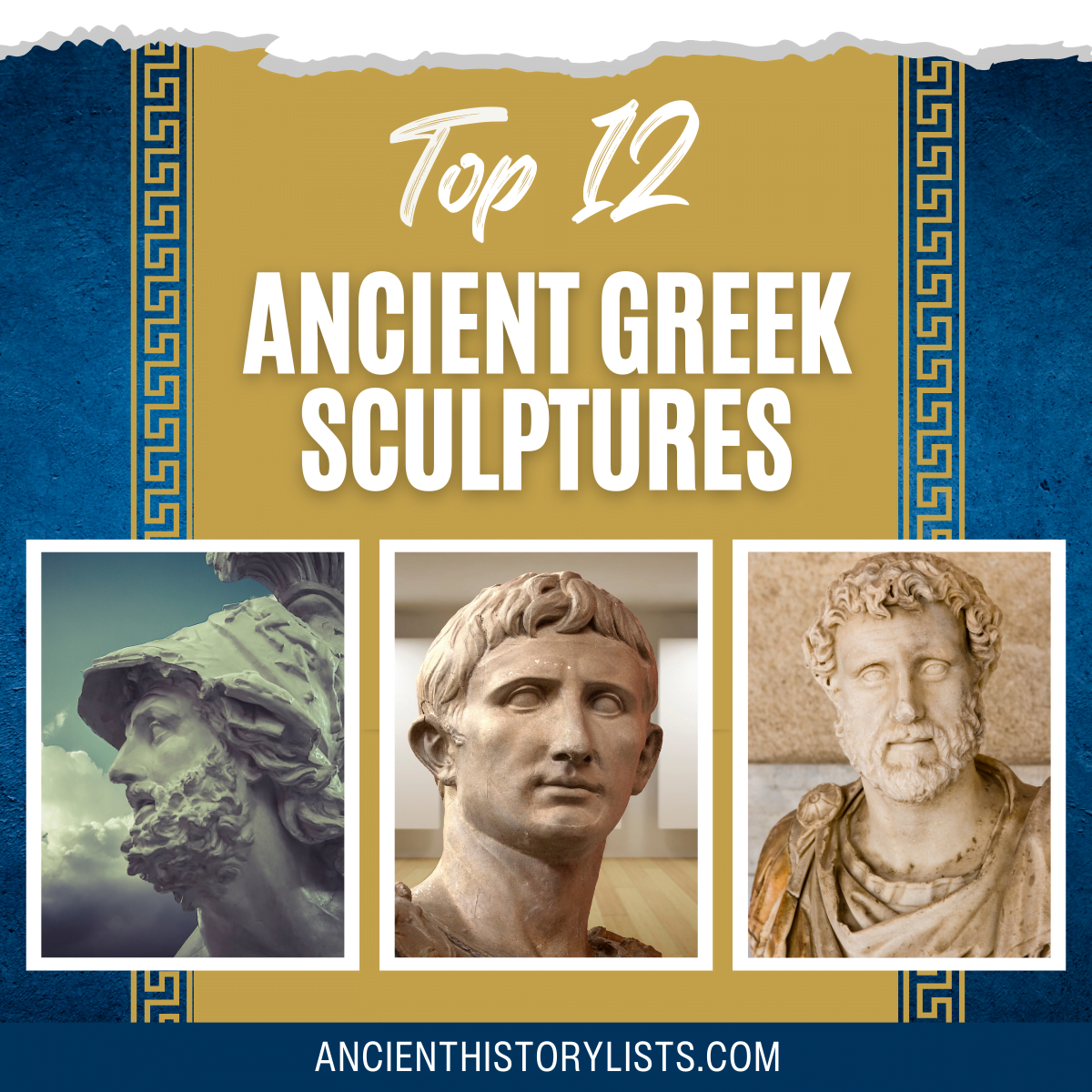
The top 12 ancient Greek sculptures are as follows:
1. Alexander the Great
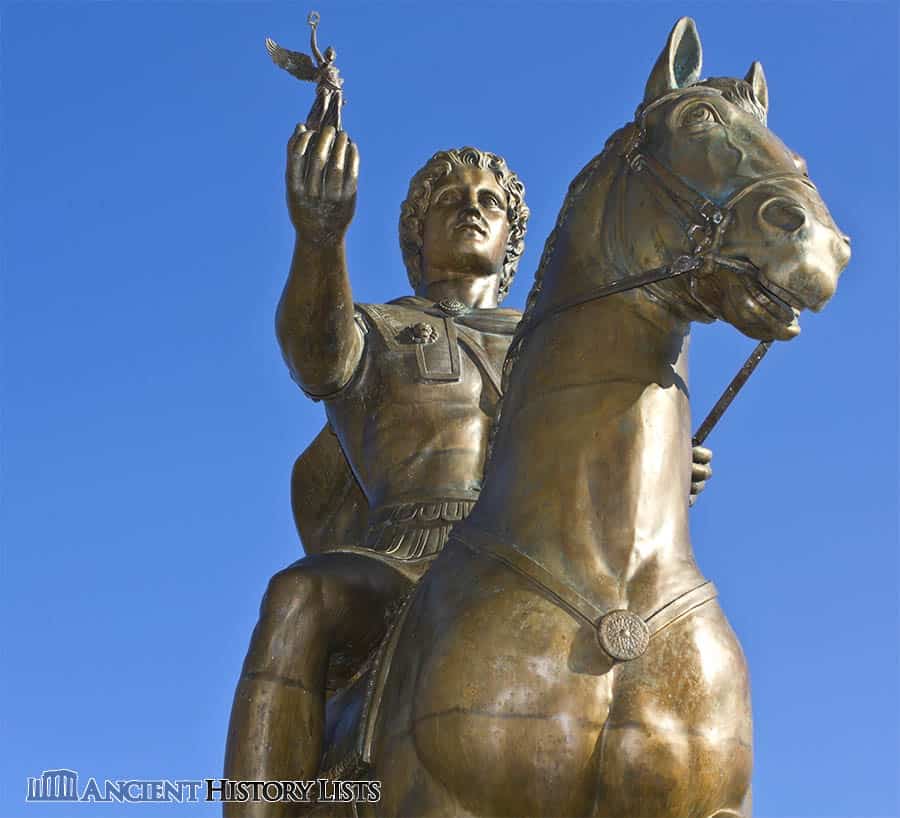
Who hasn’t heard of Alexander the Great? Alexander was an ancient Greek military leader and ruler. His sculpture was found at a place called Pella Palace in Greece.
Alexander fought many battles and never lost one in his life. The great battle between Alexander and Porus in 327 BC was the battle where Alexander lost his precious and beloved horse Bucephalus whom he tamed at the age of 12. It was also where Alexander had to send his troops back to Persia. The horse in the sculpture is Bucephalus.
Losing one of his most beloved friends, Hephastion, was the turning point in Alexander’s life. After he had recovered from the loss, he went on to rule half of the world. However, while he was planning to conquer Arabia, he was taken ill and was called upon by Thanatos, the Greek god of death. The cause of his death stills remains a mystery.
2. Peplos Kore
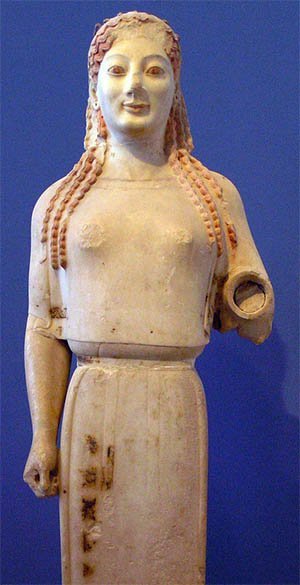
Kore means “pure girl” and a peplos was a shawl worn by women in ancient Greece. The girl in the sculpture can be seen wearing one of these. This sculpture was created during the Archaic period and is a stylized image of Athena, the goddess of war. Athena was the least selfish and most noble goddess of the Greek pantheon.
The statue stands 1.18m high, is made of white marble, and is decorated with bronze pieces of metal all over the head and shoulders. Its facial features are beautifully carved, demonstrating the skill and artistry of the craftsmen at that time. The Peplos Kore is now kept in the Acropolis Museum in Athens.
3. Harmodius and Aristogeiton
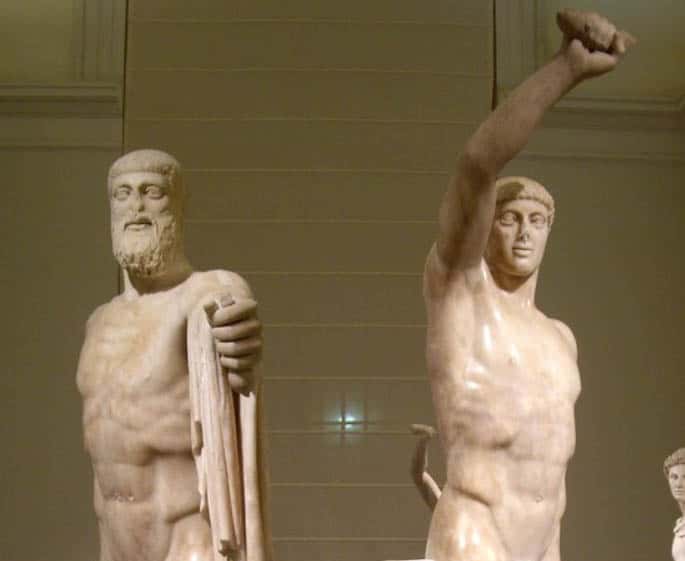
Harmodius and Aristogeiton were ancient Athenian lovers and considered the symbol of democracy and freedom because they killed the Peisistratid tyrant, Hipparchus. After successfully carrying out the murder of Hipparchus, they were caught.
Harmodius was killed on the spot whereas Aristogeiton was tortured to death. After the incident, they became known as the Tyrannicides, or “killers of the tyrant” and statues were built in their honor.
Their statues are actually an illustrative description of pederasty which refers to a relationship between an old man and a young man. Two versions of these statues have been found, the Roman one being the most accurate depiction of them.
4. Dying Gaul
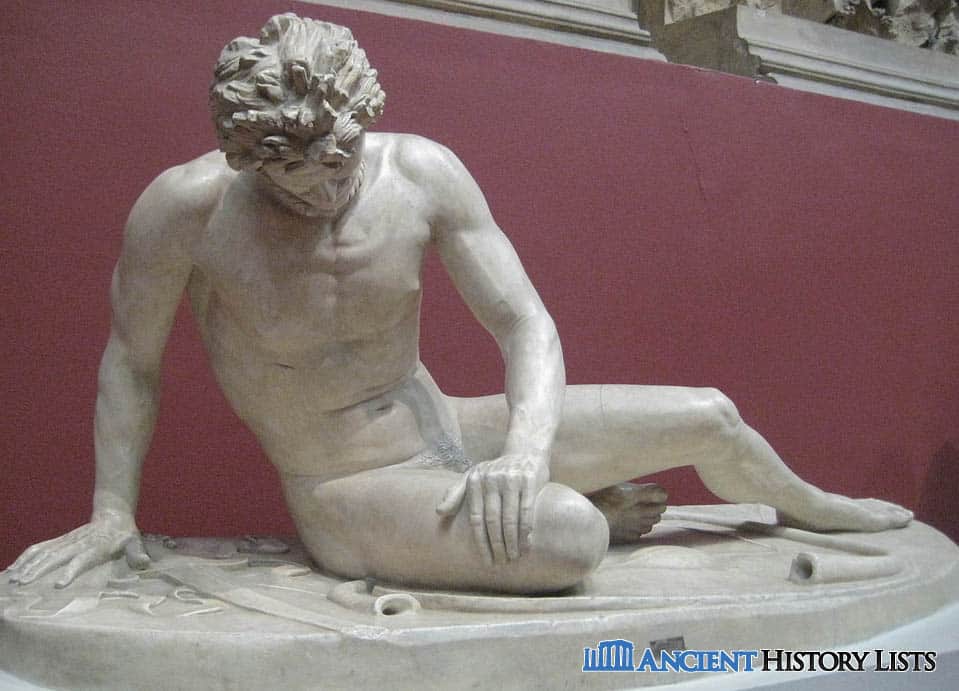
Ancient Gaul was a region that covered parts of France, northern Italy, Belgium, Luxembourg and other areas in modern Europe. Often referred to as The Dying Galatian, this marble statue was attained from the Ludovisi sculpture collection in 1734. The figure is of a wounded Galatian and very accurately depicts the warrior’s wounds and the pain of his last moments.
The statue represents the defeat of the Celts who fought naked. The Celts were men with great physique and strength, and this statue is thought to dignify nudity.
There are replicas of the original Greek sculpture dating back to the Roman period. These are made of bronze and commemorate the victory of King Pergamon over the Gauls. Various other copies can be found in different museums all over the world such as Berlin, Prague, and Versailles.
5. Laocoon and His Sons
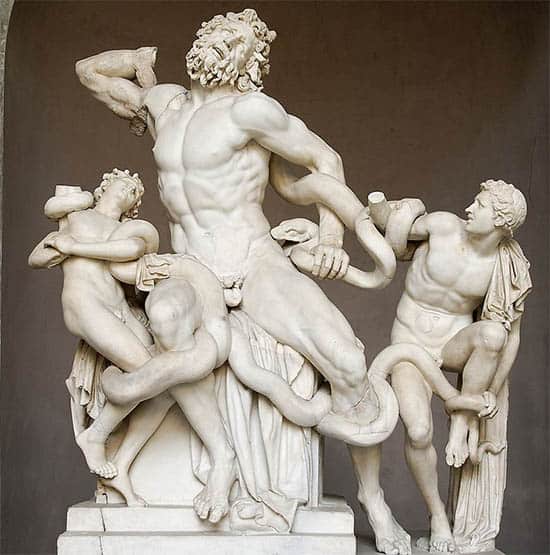
This ancient Greek sculpture was excavated in the 16th century and is thought to be from the Hellenistic period. The ancient Greek writer and philosopher Pliny the Elder has praised this statue a number of times.
The story of Laocoon and his sons comes from the Greek epic telling of the Trojan Wars. Laocoon, along with two of his sons, was killed when they were trying to expose the Trojan horse. The statue depicts fear, suffering, pain, and death as seen in the face of Laocoon.
The statue of Laocoon has been an influence on many later pieces. It is now in the Vatican City.
6. Trojan Horse
The sculpture of the Trojan horse reminds us of the ancient tale from Homer’s Odyssey where the Achaeans hide in the belly of a wooden horse in an attempt to penetrate the city of Troy.
The Trojan horse was left as an offering to the goddess Athena, and as a victory token, the Trojans took the horse inside the city walls. The Greeks emerged from the horse, and Troy was destroyed, ending the war between the Greeks and the Trojans.
This story is considered by some to be the biggest lie in ancient history, while others look on it as the greatest trick. Whatever your view, the story serves as a reminder to not take gifts from the enemy.
7. The Venus de Milo
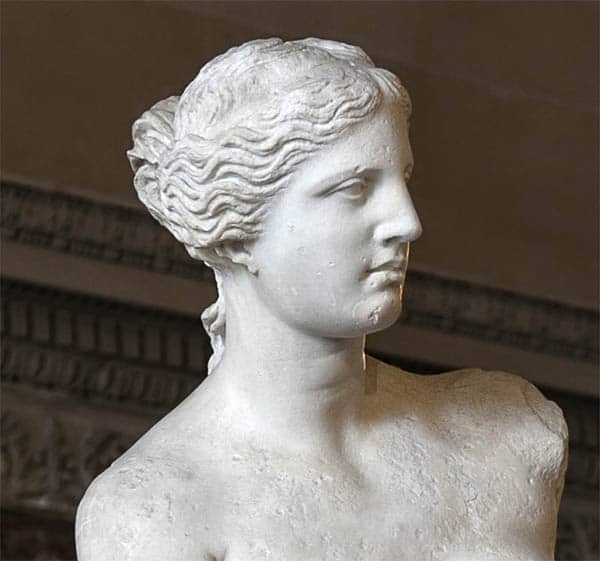
The Venus de Milo is a Corinthian statue thought to have been built in 4 BC during the Hellenistic period. It is made of marble found near the Maeander River.
The ancients often based their art on the figure of Aphrodite, the goddess of love and beauty. The face of the statue has an expression of mystery and is draped in cloth over the lower part of the body. The goddess remains armless as, during the excavation process, pieces were broken or lost.
The Venus de Milo is one of the greatest works of the ancient Greek period and is presently at the Louvre in Paris.
8. Winged Victory of Samothrace
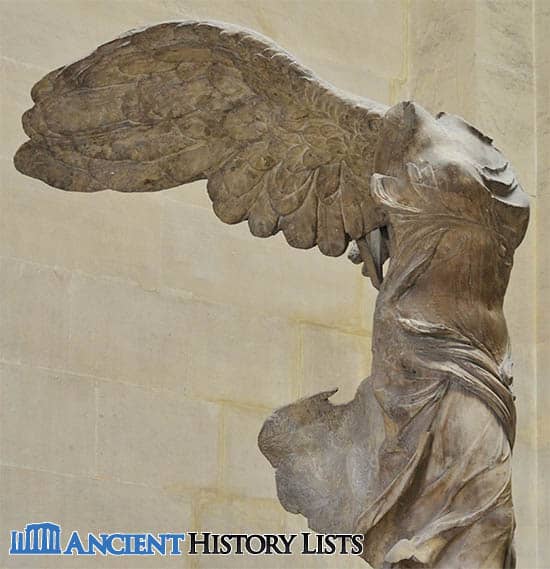
The Winged Victory of Samothrace is an ancient Greek sculpture of the late Hellenistic period made in 190 BC and depicts Nike, the winged goddess of victory.
The statue was made to commemorate the naval victory of a Macedonian general. It is made of Parisian marble and stands nine feet (2,7 meters) tall. The statue made a significant impact on the art and culture of the ancient Greek period.
The wings are very finely carved, and the figure is only partially covered with clothing; semi-nudity being common during those times. The figure is shown in a twisted, asymmetrical posture which was also a common feature.
This statue can be found in the Louvre in Paris.
9. Aphrodite of Knidos
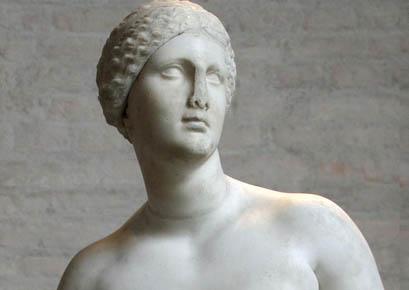
The most famous work of the ancient sculptor Praxiteles, Aphrodite of Knidos, dates from the Hellenistic period around 4 BC.
Aphrodite, the goddess of love, is represented nude – the first female nude sculpture. The goddess is seen to be removing her clothing and preparing for a bath. Praxiteles has turned this everyday moment into a breathtaking sculpture. The Aphrodite of Knidos is made of marble, like all the statues from that period, and was thought to be very provocative.
Praxiteles carved two statues of Aphrodite: one draped in clothes and the other nude. Of the two, this second one became the most famous, and the people of Knidos came to see it as a sign of respect and love in their city. Several attempts have been made to replicate the statue.
10. Biton and Kleobis
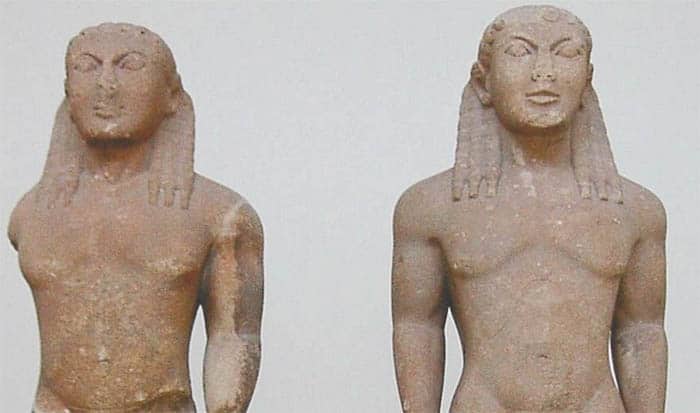
This sculpture of two Archaic Greek brothers from Delphi is now at the Delphi Archaeological Museum.
The heads of the sculptures are triangular and the bodies are carved in a spiral form. The figures are made of fragmented marble and are a typical depiction of male youth in the Archaic period.
The ancient story tells how the brothers took their mother to the temple to offer prayers to the goddess Hera. Unable to find their mother’s oxen, the brothers yoked themselves to the cart and took her there themselves.
After offering their prayers to Hera, they fell asleep and did not wake up. This was seen as a gift from Hera because, in Greek mythology, life after death is more important than this life. The story honors the two boys for their strength, and they were rewarded with a beautiful death and a holy sleep.
11. Artemision Bronze
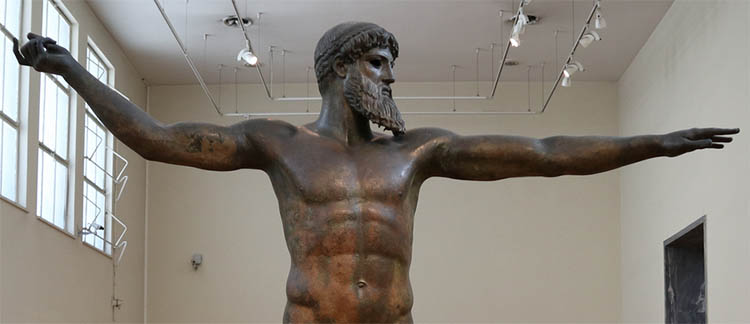
This sculpture is a rare bronze statue that was retrieved from the sea off Cape Artemision in Greece. The statue may have been carved to resemble Zeus or Poseidon, the god of the sea, and is believed to be from the Hellenistic period in the first or second century BC.
The Artemision Bronze is completely different from other sculptures from that period. While other sculptures were carved from marble, this statue was cast in pieces and then welded together to form a life-sized sculpture.
The right hand of the statue is either holding a trident to represent Poseidon or a thunderbolt to represent Zeus. The face was made from different kind of metals, for example, the eyebrows from threads of silver and the lips from copper, but these details are now missing from the statue which can be found at the National Archaeological Museum of Athens.
12. Mask of Agamemnon
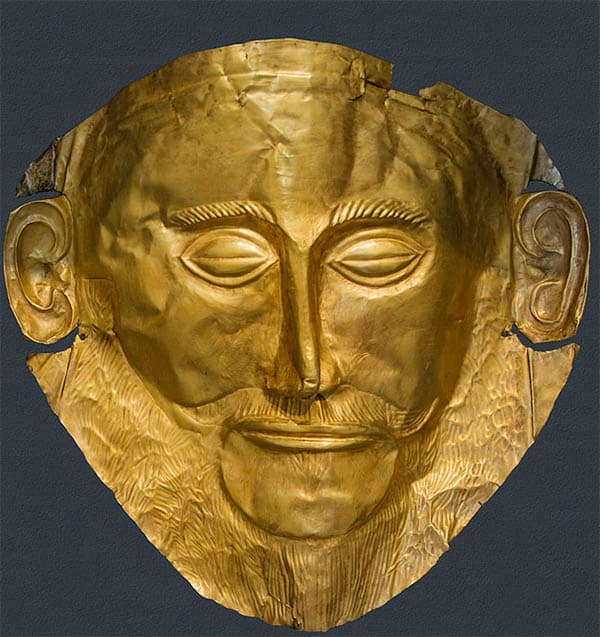
Agamemnon was one of the most popular characters of the ancient Greek period among historians and philosophers, and his tragic history tells of a father who sacrificed his daughter to the god of wind so that his ships could sail to Troy. The story was set during the Trojan Wars. After returning from the war, Agamemnon was murdered by his wife Clytemnestra in revenge for her daughter’s sacrifice.
The Mask of Agamemnon is made of gold. It was created from a single gold sheet which was hammered and chiseled to give its powerful expression. Presently, the sculpture is in the National Archaeological Museum of Athens.
Conclusion
The ancient Greek people used art as a form of prayer and believed that in return they would be blessed with strength and power. Their art reflects the culture, beliefs, and stories of the ancient Greek period, and was represented in sculpture form by the world’s most accomplished artists. These sculptors were able to accurately represent expression and form in great detail, and their techniques were unequalled at the time.